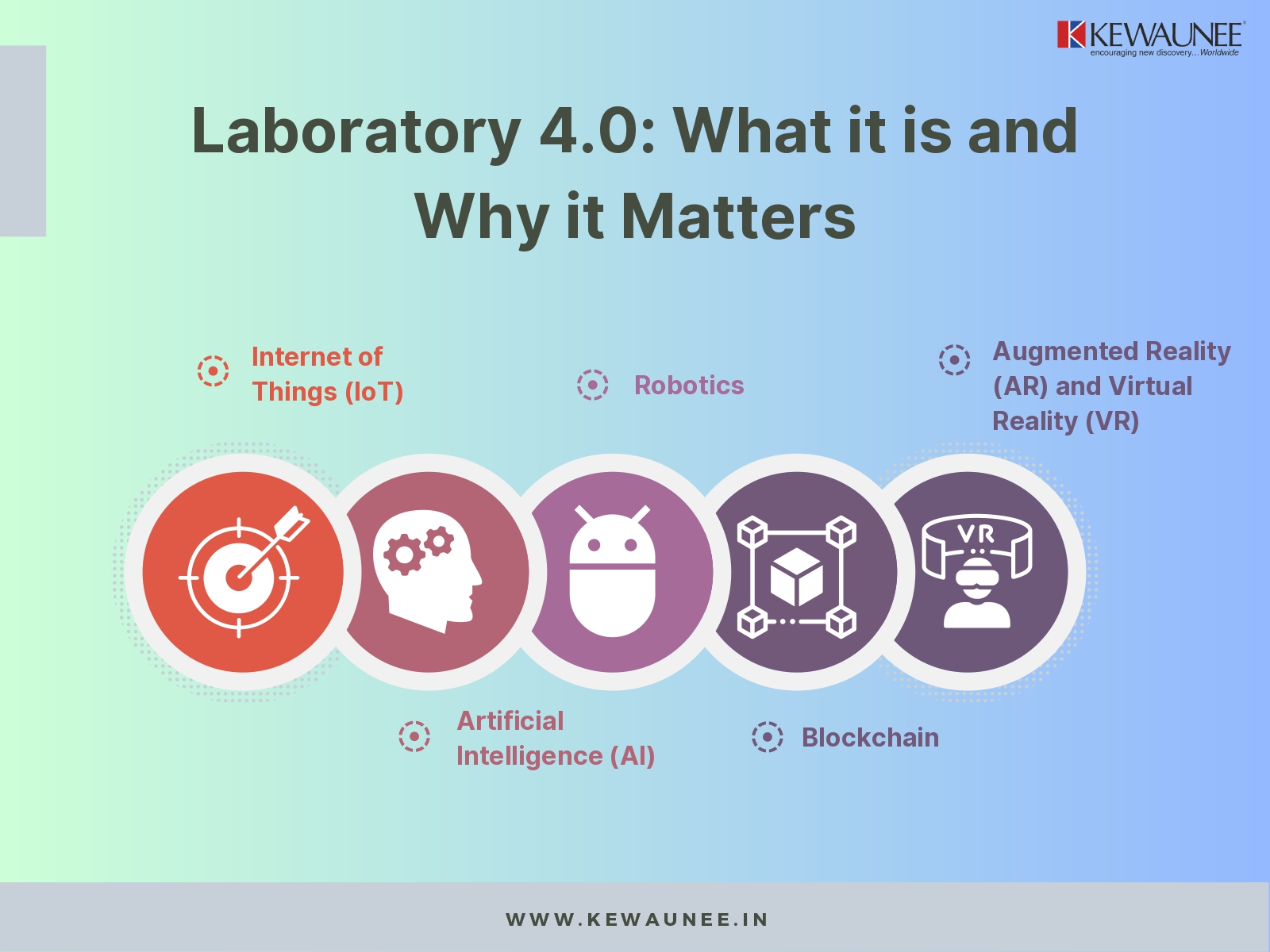Laboratory 4.0: What it is and Why it Matters
The Fourth Industrial Revolution (Industry 4.0) has transformed many industries, including the laboratory sector. With the introduction of advanced technologies, laboratories have evolved to become more efficient, productive, and safer.
Laboratory 4.0 is the next step in this evolution, and it promises to revolutionize the way laboratories operate. This blog post provides an overview of Laboratory 4.0, its benefits, and key technologies and trends that are driving this transformation.
The Evolution of Laboratories
Laboratories have come a long way since their inception. They started as small rooms equipped with basic equipment for conducting experiments. Over the years, they have evolved to become sophisticated facilities with state-of-the-art technology for research, testing, and analysis.
With the introduction of the Fourth Industrial Revolution, laboratories are experiencing another transformation. The Fourth Industrial Revolution is characterized by the integration of advanced technologies into every aspect of our lives, including the laboratory sector.
What is Laboratory 4.0?
Laboratory 4.0 is a concept that refers to the integration of advanced technologies and principles of Industry 4.0 into laboratory operations. The goal of Laboratory 4.0 is to make laboratories more efficient, productive, and safer.
Key components of Laboratory 4.0 include automation, data analytics, and artificial intelligence. Laboratories that adopt Laboratory 4.0 principles can expect to see improvements in productivity, efficiency, and safety.
The Benefits of Laboratory 4.0
The benefits of Laboratory 4.0 are numerous. Laboratories that adopt these principles can expect to see improvements in productivity, efficiency, and safety. Some of the key benefits of Laboratory 4.0 include:
- Improved efficiency and productivity: By automating routine tasks, laboratories can free up time for scientists and technicians to focus on more complex tasks. Automation can also reduce the risk of errors and improve the accuracy of results.
- Enhanced data analytics: Laboratories generate vast amounts of data, and Laboratory 4.0 technologies enable scientists and technicians to make sense of this data more quickly and accurately. By analyzing data in real-time, laboratories can identify trends and patterns that were previously difficult to detect.
- Improved safety: By automating routine tasks, Laboratory 4.0 technologies can reduce the risk of accidents and injuries. Additionally, Laboratory 4.0 technologies can monitor laboratory conditions in real-time, alerting scientists and technicians to potential hazards.
Key Technologies and Trends
Laboratory 4.0 is enabled by a variety of technologies and trends that have emerged in recent years. These technologies and trends work together to create a more connected, automated, and data-driven laboratory environment.
Internet of Things (IoT)
The Internet of Things refers to the network of physical devices, vehicles, home appliances, and other items embedded with electronics, software, sensors, and connectivity, which enables these objects to connect and exchange data.
In the context of Laboratory 4.0, IoT technology can be used to connect various laboratory instruments and equipment to a central network. This allows for real-time data collection and analysis, remote monitoring and control of experiments, and automated workflows.
Artificial Intelligence (AI)
Artificial intelligence refers to the simulation of human intelligence in machines that are programmed to think and act like humans. In the context of Laboratory 4.0, AI technology can be used to analyze large amounts of data generated by laboratory instruments and equipment.
This can lead to more accurate and insightful conclusions, as well as the identification of patterns and trends that might otherwise go unnoticed. AI can also be used to optimize laboratory workflows and automate repetitive tasks.
Robotics
Robotics technology can be used in laboratory environments to automate tasks such as sample preparation, handling, and processing. This can lead to improved accuracy and precision, as well as increased efficiency and throughput. Robotics can also be used to minimize the risk of human error and improve laboratory safety.
Augmented Reality (AR) and Virtual Reality (VR)
Augmented reality and virtual reality technologies can be used in laboratory environments to provide immersive and interactive experiences for researchers and technicians.
For example, AR can be used to overlay virtual information onto the physical environment, providing real-time feedback on laboratory processes and equipment.
VR can be used to simulate laboratory environments and experiments, allowing researchers to practice and refine their techniques before conducting experiments in the real world.
Blockchain
Blockchain technology can be used in laboratory environments to ensure the integrity and traceability of laboratory data. Blockchain is a decentralized digital ledger that records transactions in a secure and transparent manner.
In the context of Laboratory 4.0, blockchain can be used to track laboratory samples, equipment, and data, providing a secure and transparent record of their movement and use.
The Future of Laboratory 4.0
As Laboratory 4.0 continues to evolve and grow, there are several emerging technologies and advancements that are likely to shape its future. One of the most significant of these is the increasing use of edge computing, which involves processing data locally rather than transmitting it to a remote server. This allows for faster analysis and decision-making, which can be especially important in laboratory settings where time is of the essence.
Another key trend in Laboratory 4.0 is the use of advanced data analytics and machine learning algorithms to optimize laboratory processes and workflows. With the help of these technologies, laboratories can analyze large amounts of data from multiple sources, identify patterns and trends, and make more informed decisions about how to improve their operations.
Finally, the continued growth of the Internet of Things (IoT) and the increasing availability of low-cost sensors and devices are also likely to play a major role in the future of Laboratory 4.0. These technologies can be used to collect real-time data on laboratory processes, equipment performance, and environmental conditions, providing laboratories with unprecedented insights into their operations.
Of course, there are also potential challenges and solutions that must be considered as Laboratory 4.0 continues to evolve. One of the biggest challenges is the need to ensure the security and privacy of laboratory data, especially given the sensitive nature of much laboratory research. To address this challenge, laboratories must implement robust cybersecurity measures and protocols to protect their data from unauthorized access or theft.
Another challenge is the need to ensure that Laboratory 4.0 technologies are accessible and affordable for laboratories of all sizes and budgets. This may require increased collaboration between industry, academia, and government to develop and promote open-source technologies and standards that can be used by laboratories around the world.
Conclusion
In conclusion, Laboratory 4.0 represents a major step forward in laboratory safety, efficiency, and innovation. By embracing the key components and principles of Laboratory 4.0, laboratories can improve their operations, enhance their data analytics and automation capabilities, and promote greater sustainability and safety in their work.
As Laboratory 4.0 continues to evolve, it is important for laboratories to stay up-to-date with the latest technologies and trends in order to remain competitive and effective. By investing in Laboratory 4.0 technologies and principles today, laboratories can help to ensure a brighter and more innovative future for the laboratory industry as a whole.
Comments are closed.











